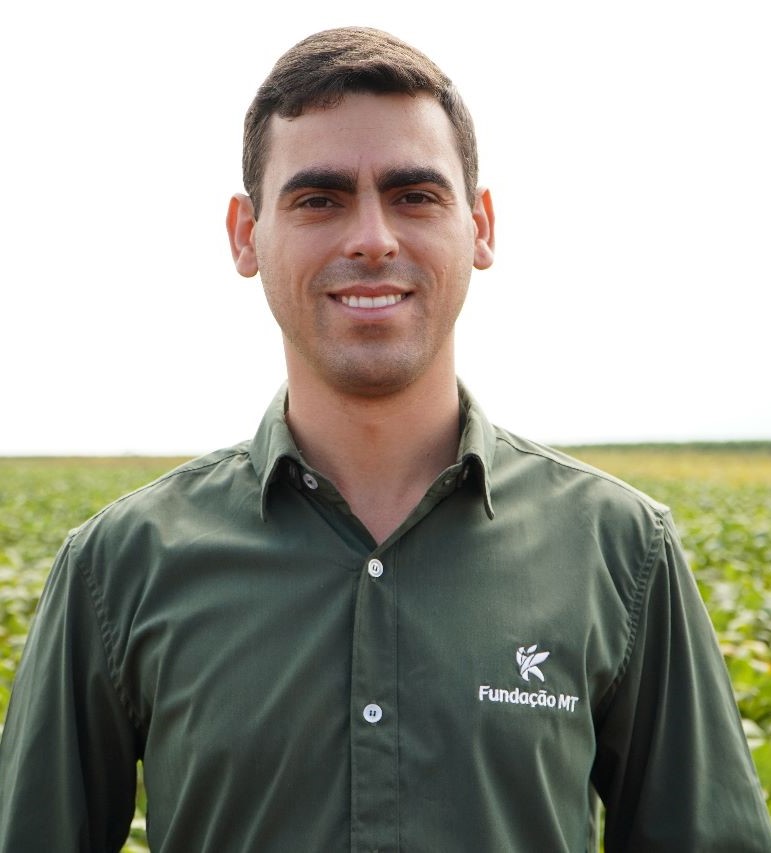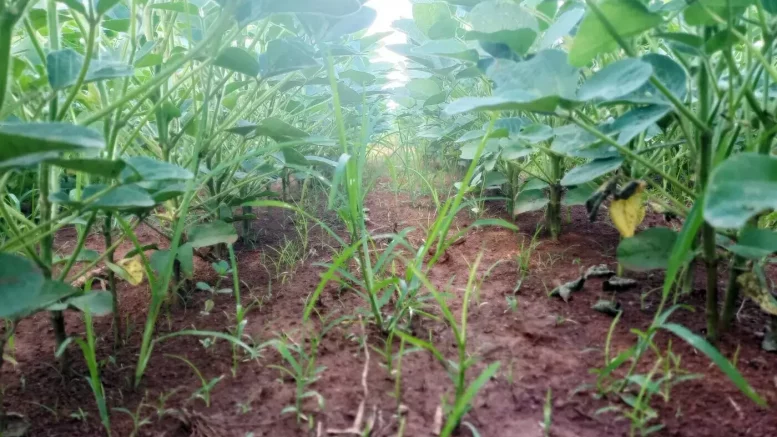“When soybean crops were being sown, there were weeds in the farms, which were already developed…”
Lucas Barcellos is a researcher at Fundação MT, an agronomist, M.Sc. and Ph.D. from the Federal University of Viçosa.

Lucas Barcellos, researcher at Fundação MT
AgriBrasilis – Will the delay in soybean sowing harm the next corn season?
Lucas Barcellos – This will be different for each farmer. I believe that, in specific cases, farmers may not respect the ideal corn sowing window and have their production negatively impacted, especially if rainfall ends earlier, before the grains are filled. But there are other factors, such as the price of the commodity, which can have a greater impact on the corn season.
AgriBrasilis – What have hurt the soybean farmer the most this year?
Lucas Barcellos – It was definitely the weather conditions. The high temperatures and low volumes of rainfall in the Central-West region of Brazil, in addition to affecting the morphophysiological aspects of soybeans, led to severe attacks by pests and weeds in the crops. Climate adversity results in difficulty in controlling pests and weeds and in the sensitivity of the soybean crop to products.
AgriBrasilis – Does crow’s foot grass put soybeans at risk in the State of Mato Grosso? What other invasive plants are of concern?
Lucas Barcellos – Crow’s foot grass (Eleusine indica), and also other species of weeds, such as: sourgrass (Digitaria insularis), horseweed (Conyza bonariensis), shrubby false buttonweed (Spermacoce verticillata), pigweed (Amaranthus spp.), Aleppo grass (Sorghum halepense), and even voluntary corn have greatly challenged the farmers.
Due to the difficulty of performing weed control using herbicides, whether due to resistant or tolerant plants, it is necessary to adopt practices that integrate the entire production system in the area to guarantee a better efficiency in controlling weeds.
AgriBrasilis – What are the main points to consider for efficient weed control?
Lucas Barcellos – We can no longer think of chemical control (use of chemical herbicides) as the only available tool. The complexity of herbicide-tolerant or resistant weeds requires that farmers use Integrated Weed Management principles (IWM).
IWM consists of different management strategies, from preventing the occurrence of problematic species in crops to cultural, mechanical and physical control methods. All of these integrated practices direct the best use of resources for soybeans and enable the crop to “win” the competition against weeds.
Chemical control is yet another tool, and it certainly contributes to control, as long as it is used in a planned and conscientious way, with the rotation of herbicide products in the production system. Furthermore, it is essential to adopt early desiccation (autumn management) and use of herbicides that inhibit or delay the emergence of weeds (pre-emergent herbicides).
“Climate adversity resulted in difficulty controlling pests and weeds…”
AgriBrasilis – You said that high temperatures are making it difficult to control invasive plants. Why? What are the consequences?
Lucas Barcellos – Not only the high temperatures, but their association with the moment that rainfall occurs. What happened recently in many regions of the State of Mato Grosso was rainfall during the off-season, which led to the emergence of weeds in mid-June/July. The farmer who did not pay attention to carrying out early desiccation found old weeds in the area and, in many cases, perennial plants, that regrew from the previous harvest.
When soybean crops were being sown, there were weeds in the farms, which were already developed and facing high temperatures and lack of rain. In this condition, the desiccant herbicides did not present the desired performance on weeds, especially in the case of crow’s foot grass, sourgrass and voluntary corn, for example. This resulted in high weed competition with soybean plants, compromising their initial growth, in addition to stress in soybean plants, caused by post-emergence herbicides.
AgriBrasilis – Is this soybean season worse than previous ones?
Lucas Barcellos – Regarding climatic conditions, in the last season (2022/23) there was a good quantity and distribution of rain, which provided an excellent performance of the productive potential of the soybean crop and also in the case of the off-season crops.
The 2022/23 season had water available during the most important times for soybean, temperatures close to optimal conditions and adequate solar radiation. In 2023/24, all of these climate components showed a different behavior, impacting the physiological aspects of soybeans and the number of pests and weeds. Even so, this is not the first time that agriculture has gone through challenging years like this. In fact, challenging years are actually the most frequent ones.
READ MORE:

